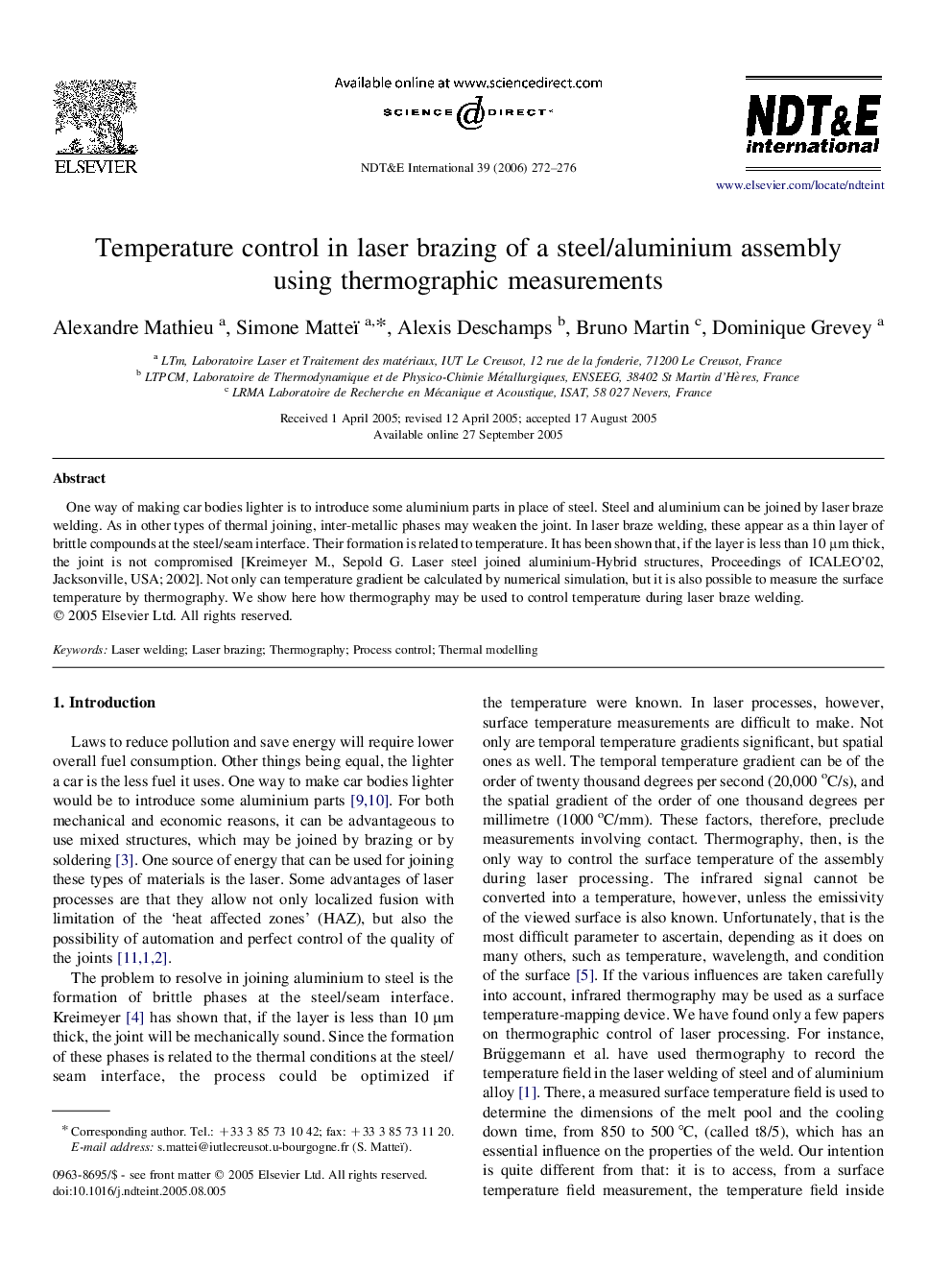| Article ID | Journal | Published Year | Pages | File Type |
|---|---|---|---|---|
| 295860 | NDT & E International | 2006 | 5 Pages |
One way of making car bodies lighter is to introduce some aluminium parts in place of steel. Steel and aluminium can be joined by laser braze welding. As in other types of thermal joining, inter-metallic phases may weaken the joint. In laser braze welding, these appear as a thin layer of brittle compounds at the steel/seam interface. Their formation is related to temperature. It has been shown that, if the layer is less than 10 μm thick, the joint is not compromised [Kreimeyer M., Sepold G. Laser steel joined aluminium-Hybrid structures, Proceedings of ICALEO'02, Jacksonville, USA; 2002]. Not only can temperature gradient be calculated by numerical simulation, but it is also possible to measure the surface temperature by thermography. We show here how thermography may be used to control temperature during laser braze welding.
